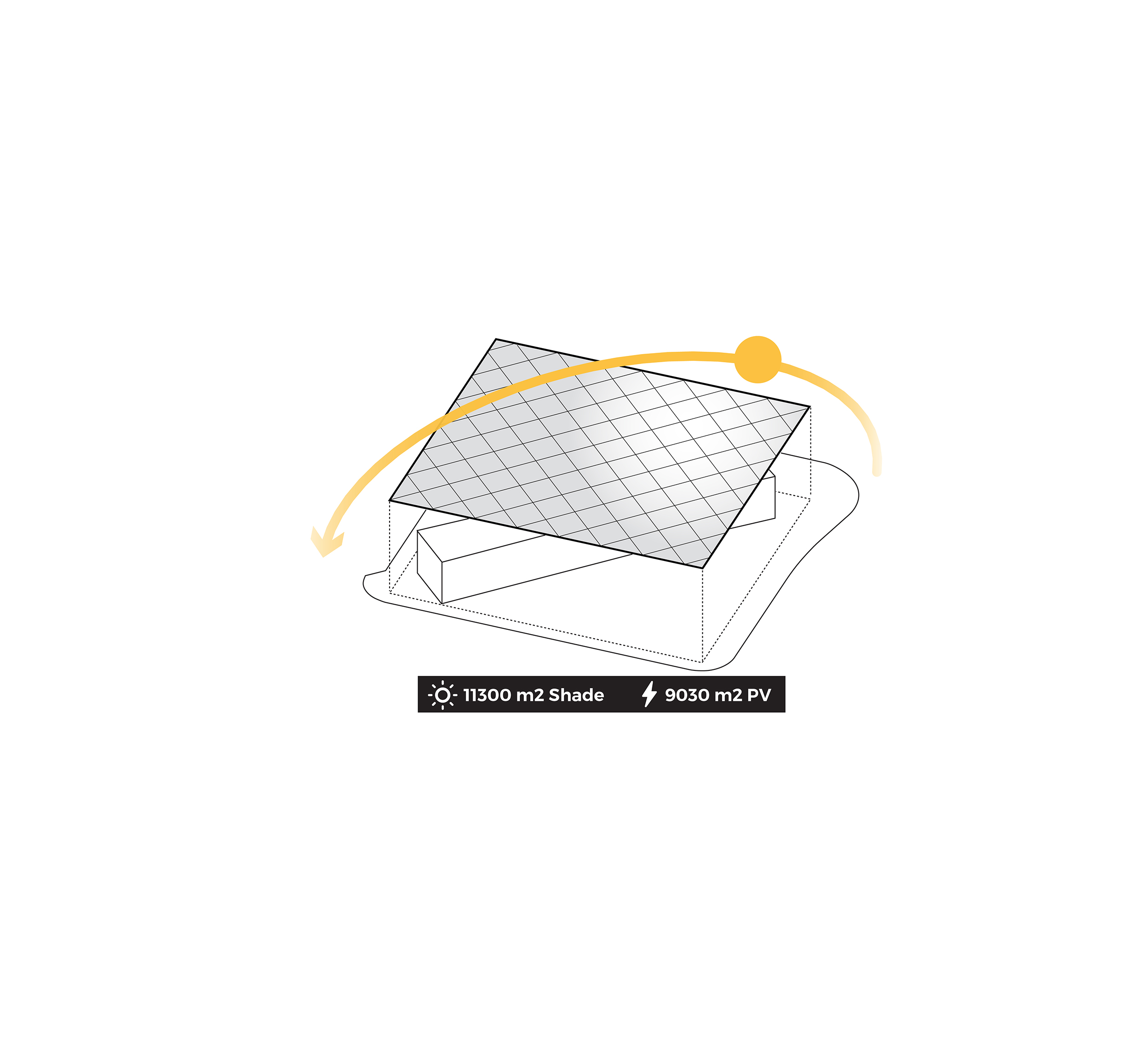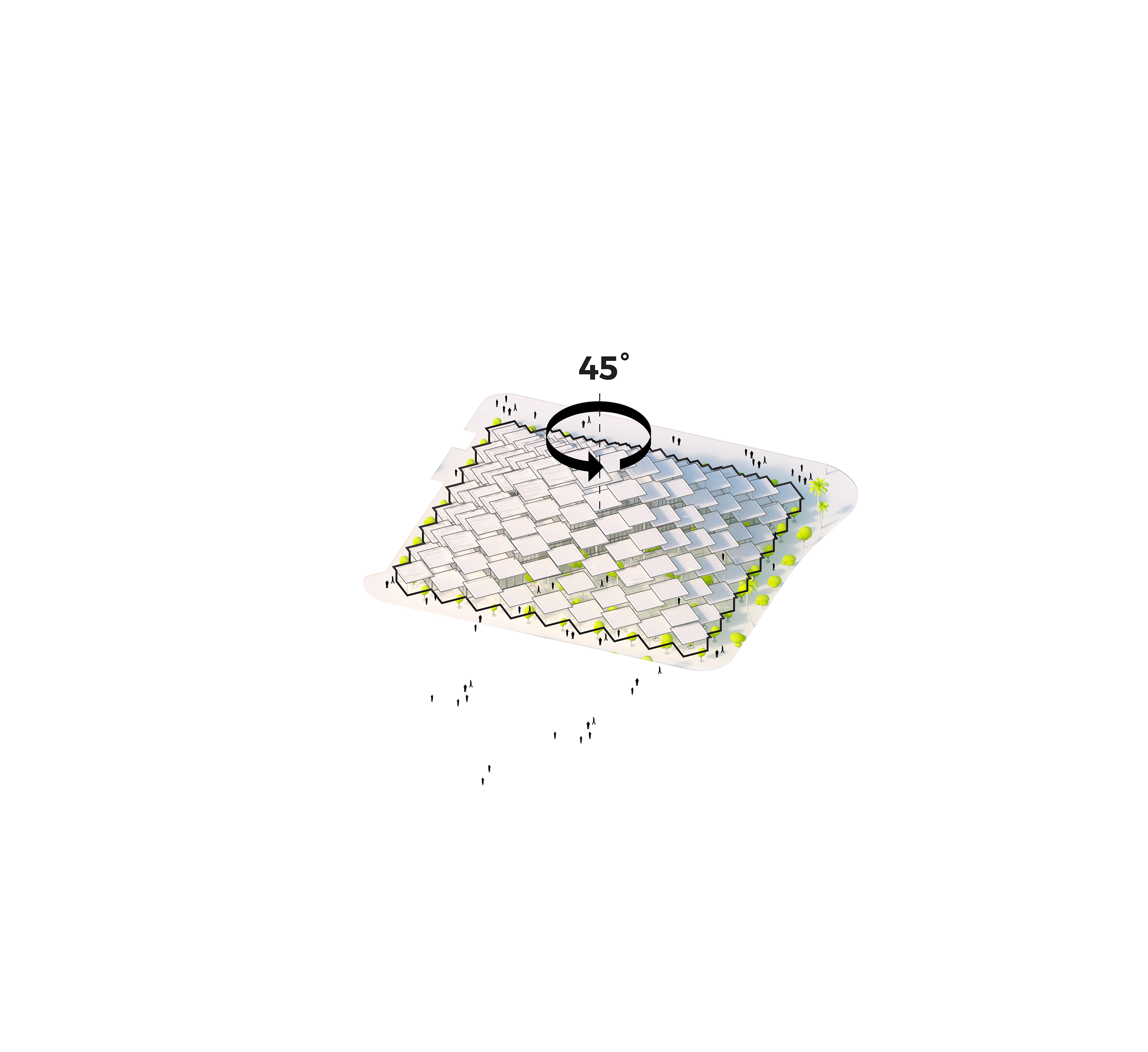STATUS
IN CONSTRUCTION
SEVILLA, SPAIN
CLIENT
European Commision Joint Research Center
TYPOLOGY
Work
SIZE M2/FT2
9,922 / 106,800
STATUS
IN CONSTRUCTION
SHARE
The new Joint Research Center in Seville, ‘Solar Cupola’ delivers on JRC’s commitment to sustainability, unites the European vision of the New Bauhaus initiative, and establishes a new benchmark for workspace that empowers knowledge sharing, collaboration and co-creation.
Located at the former EXPO ´92 site, in Isla de la Cartuja, the new 9,900 m2 building for the European Commission, ties into the City of Sevilla’s goal to become a global benchmark for sustainability by 2025 and the local vision of the eCity Sevilla project to decarbonize and transition Isla de la Cartuja to 100% renewable energy sources.
The building will house 12 research units and supporting functions as well as public and private outdoor spaces.
Informed by the shaded plazas and streets of Seville, BIG proposes to cover the entire project site with a cloud of solar canopies sheltering the plaza, garden, and research building underneath, akin to the pergolas typical to Seville. The canopies consist of square lightweight PV sheets supported by slender columns. The roofscape cascades down from the center to a human-scale height at its periphery, creating a variety of public spaces underneath.
"With our design for the Joint Research Center in Seville, more than anything, we have attempted to allow the sustainable performance of the building to drive an architectural aesthetic that not only makes the building perform better but also makes it more inhabitable and more beautiful - a new Andalusian environmental vernacular."
Inside, the functions of the new JRC building are organized with public program and amenities such as dining, a conference center and social spaces on the ground floor, while the offices and research units occupy the upper floors for privacy and security. The collaborative workplaces face the plaza, while the deep-focus workspaces face the garden. The proposed layout is designed to be entirely flexible and adaptable according to any future needs of the JRC.
Following the building geometry and modularity two diagonal voids connect all levels of the building, encouraging physical movement as well as social interaction and informal meetings.
“When we visited the site in Seville and carefully reviewed JRC’s ambitious goals, we realized the potential to not only meet but exceed the requirements of the new JRC by creating a new breed of building - one that could become a beacon for sustainability, the future of public space and work environment - a single system tailored to Seville’s social and physical vernacular.”
The passive design of the building through its shallow floorplate and constant shading under the pergola cloud enables natural cross ventilation and ideal light qualities, reducing the energy consumption typically used on artificial lightening, air conditioning and mechanical ventilation.
The design prioritizes locally sourced materials, such as limestone, wood, and ceramic tiling. The structure is low-carbon concrete, reducing up to 30% of typical CO2 emissions, while the pergola cloud is made from recycled steel. Outdoor gardens, greenery from the region, and water elements reduce/eliminate the heat island effect and create a comfortable microclimate.
The JRC building is positioned diagonally across the site connecting it to the ‘Jardin Americano’ river-front and the Torre Sevilla market in a seamless continuous public space. Placing the building diagonally also creates a new public square on one side of the building and a private garden for the JRC community on the other. The floorplates of the research center step back as the building ascends, creating a series of terraces, shaded outdoor spaces for breakouts, relaxation, and informal meetings with views of the city.
Bjarke Ingels Andrea Hektor Angel Barreno Gutiérrez Clara Sanfeliu Hanna Ida Johansson Maria González Rodríguez de Biedma Matthew Reger Sille Foltinger Stefani Fachini De Araujo João Albuquerque Giulia Frittoli Steffan Heath Gonzalo Coronado Maceda Mireia Sala Font Elena Ceribelli Jose Gomez Carbonell Raphaël Logan Barber Francisco Abajo Duran Saina Abdollahzadeh Miquel Perez Pietro Saccardi German Otto Bodenbender Nir Leshem Luca Fabbri Wiktoria Martyna Kolakowska Carlo Basile Adelardo Domingo Ruiz Carmen Ortega Hernaez Pablo Antuña Molina Beatriz Pérez Codesido Dino Vaindirlis Luis Delgado Nicolas Bachmann Bellido Dominika Kłopotek Sara Trănescu Anabela Reyes Patrycja Tomaszewska Esther Diaz Salas Maria Tzitzimika Steffen Alvang Carlos González Pilar Serratosa Fernández-Beca Olivia Sarra Gómez Veronica Paulon Alessia Gardoni Yalda Beigagha Dino Vojvodic Batuhan Celebi Aleksandra Cichy
Buro Happold
HCP Architecture & Engineering
Grupo Argenia


